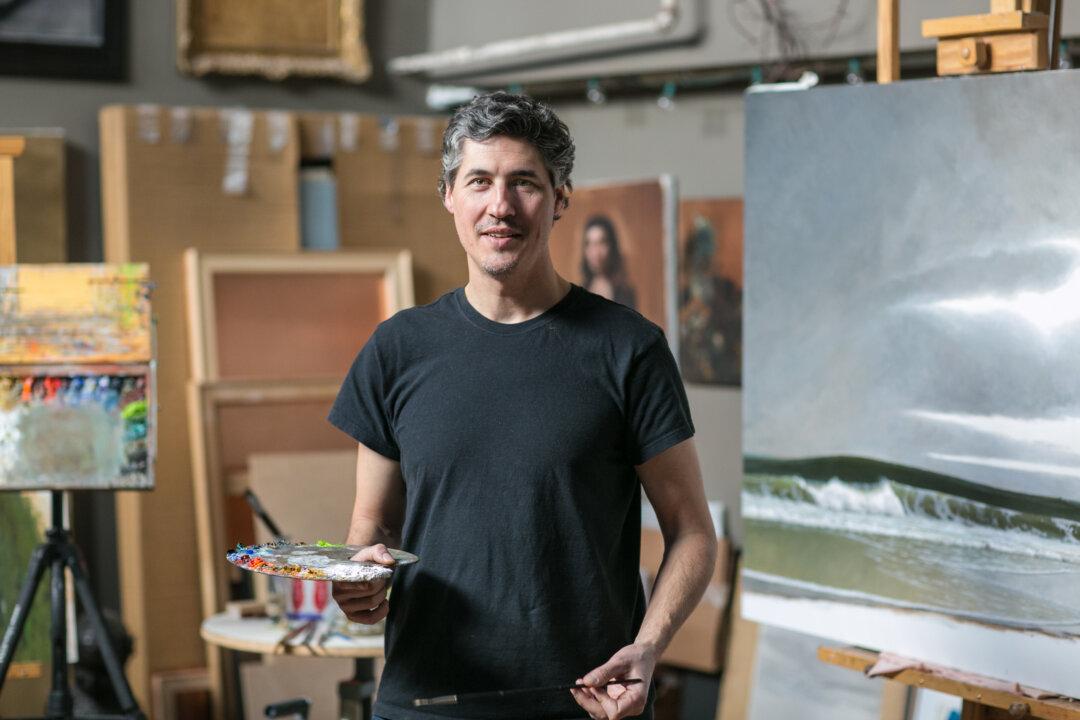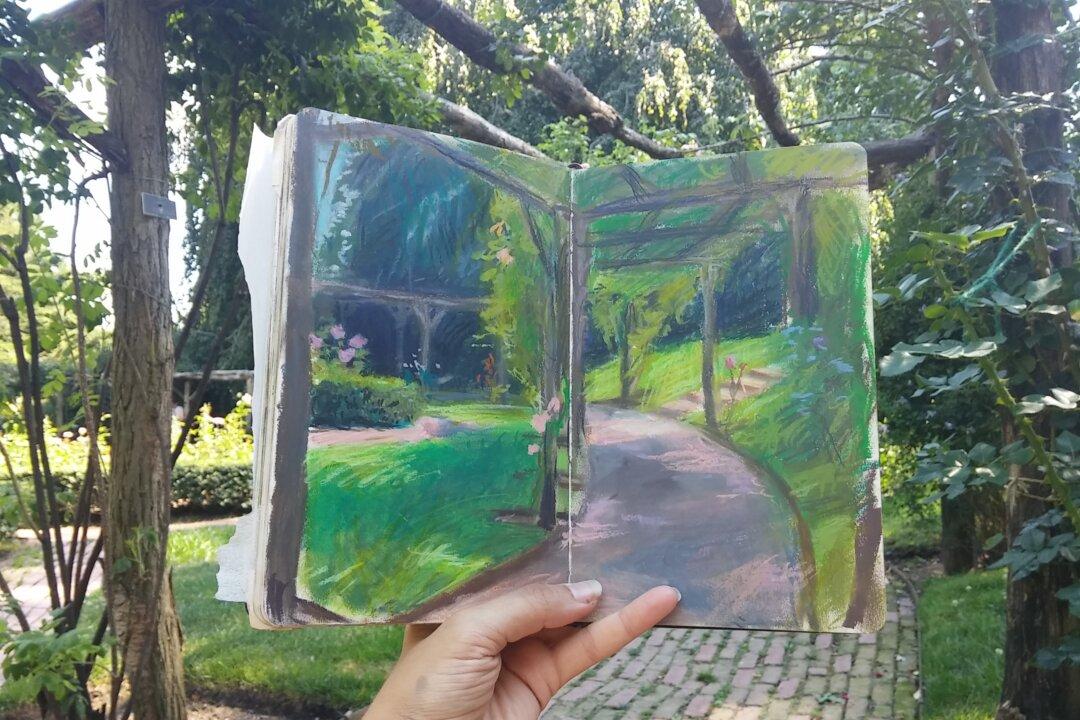NEW YORK—Waves permeate the universe—light waves, sonic waves, gravitational waves, electromagnetic waves, brain waves … ad infinitum, and water supports life. Edward Minoff can’t think of a more important thing to paint than ocean waves—truthfully. His passion was palpable in every tiny brushstroke he made while painting a seascape that he started about four months ago.
“I can’t stop painting the ocean,” he said in the downtown studio of his artist friends, Kate Lehman and Travis Schlaht.
He’s been living there temporarily with his wife and two children while waiting for his home in Brooklyn to be renovated. A portrait of him that Lehman painted about 20 years ago hung on the wall—reminiscent of the days when they were starting to seriously hone their skills and eke out a space for their survival as traditional artists. They would take turns posing for each other, along with a dozen other artists galvanized by Jacob Collins, the painter who would later found the Grand Central Atelier.
Minoff composed the horizon line of the seascape he was painting to go straight across the canvas. The height of where the sea meets the sky at either end of the painting matches perfectly. If joined up, it would form a ring, signifying infinity, he explained. A couple commissioned the painting in celebration of their wedding anniversary.







